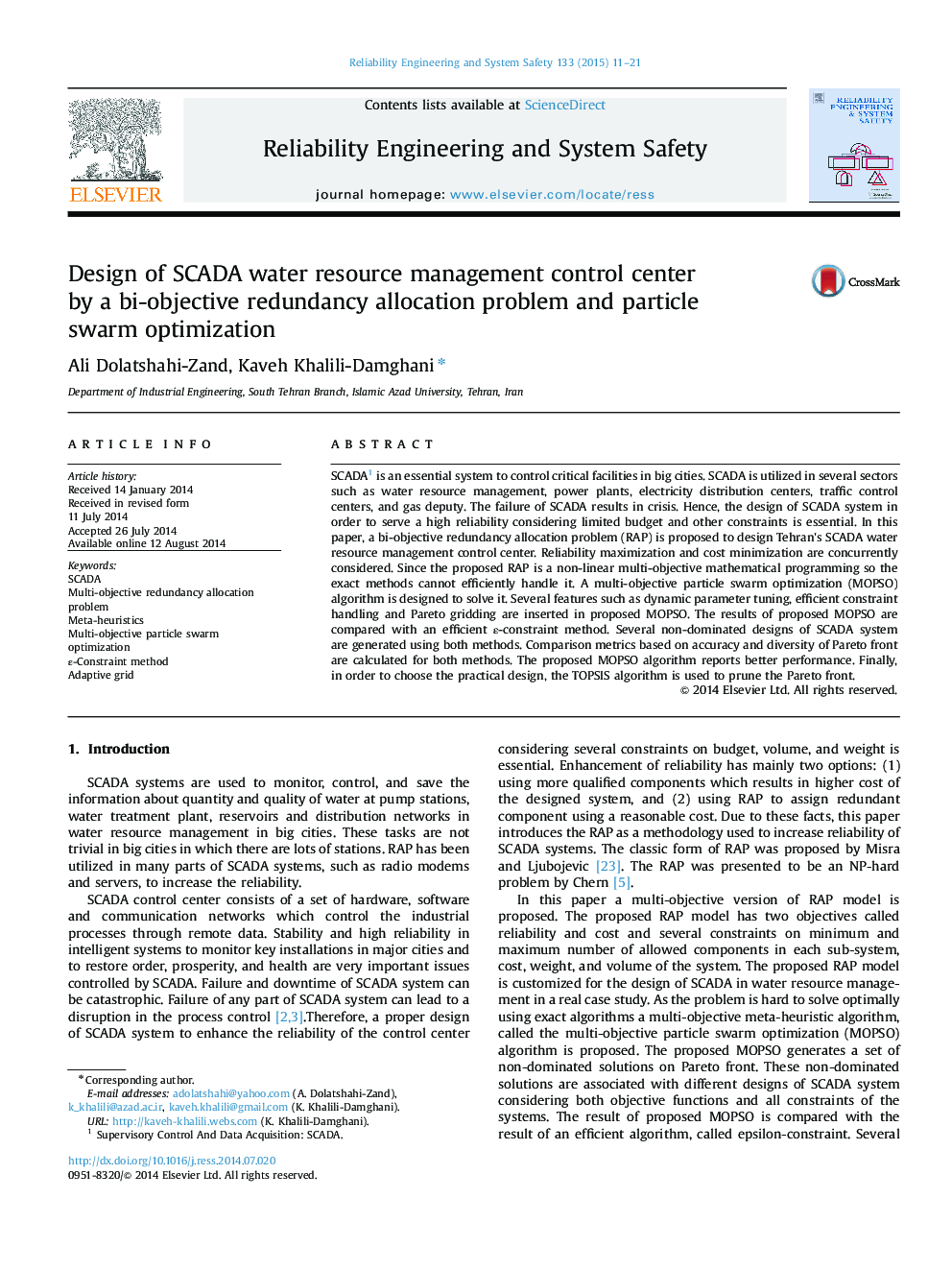| Article ID | Journal | Published Year | Pages | File Type |
|---|---|---|---|---|
| 807769 | Reliability Engineering & System Safety | 2015 | 11 Pages |
•Multi-objective redundancy allocation problem (MORAP) is proposed to design SCADA system.•Multi-objective particle swarm optimization (MOPSO) is proposed to solve MORAP.•Efficient epsilon-constraint method is adapted to solve MORAP.•Non-dominated solutions are generated on Pareto front of MORAP by both methods.•Several multi-objective metrics are calculated to compare the performance of methods.
SCADA1 is an essential system to control critical facilities in big cities. SCADA is utilized in several sectors such as water resource management, power plants, electricity distribution centers, traffic control centers, and gas deputy. The failure of SCADA results in crisis. Hence, the design of SCADA system in order to serve a high reliability considering limited budget and other constraints is essential. In this paper, a bi-objective redundancy allocation problem (RAP) is proposed to design Tehran׳s SCADA water resource management control center. Reliability maximization and cost minimization are concurrently considered. Since the proposed RAP is a non-linear multi-objective mathematical programming so the exact methods cannot efficiently handle it. A multi-objective particle swarm optimization (MOPSO) algorithm is designed to solve it. Several features such as dynamic parameter tuning, efficient constraint handling and Pareto gridding are inserted in proposed MOPSO. The results of proposed MOPSO are compared with an efficient ε-constraint method. Several non-dominated designs of SCADA system are generated using both methods. Comparison metrics based on accuracy and diversity of Pareto front are calculated for both methods. The proposed MOPSO algorithm reports better performance. Finally, in order to choose the practical design, the TOPSIS algorithm is used to prune the Pareto front.
